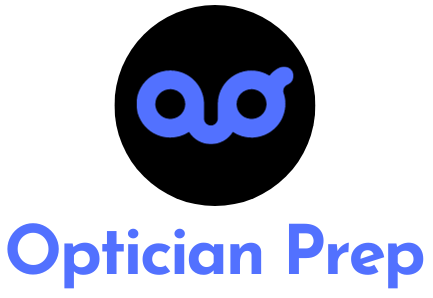The ABO (American Board of Optometry) exam features 125 multiple-choice questions tailored to assess the essential skills and knowledge of optometry professionals.
This certification test is a crucial step for optometrists to demonstrate their expertise in the field.
By reading on, you’ll uncover:
- Insights into the ABO exam’s subject coverage
- Strategies to prepare effectively for the exam
- Guidance on scoring and exam retake policies
Embark on your ABO certification journey with confidence, equipped with the know-how to conquer those 125 questions.
- Understanding the ABO Certification Exam
- A Closer Look at the ABO Exam Content
- Specifics on the ABO Exam Questions
- The Format of the ABO Certification Exam
- Preparing for the ABO Exam: Techniques and Resources
- Scoring and Passing the ABO Exam
- Retaking the ABO Exam: What You Need to Know
- ABO Certification Maintenance and Continuing Education
- Conclusion: Embarking on Your ABO Certification Journey
Understanding the ABO Certification Exam
Embarking on a career in optometry means embracing a commitment to prove your knowledge and skill through rigorous certification processes. Among these, the American Board of Optometry (ABO) Certification Exam stands as a beacon of professional excellence. For those of you looking to understand the scope of this pivotal examination, it’s important to grasp not only how many questions are on the ABO but also the implications of this certification for your path ahead.
The ABO exam serves as a critical step in validating optometrists’ proficiency and dedication to quality eye care. By mastering the content within this exam, you demonstrate to employers, colleagues, and most importantly, patients, that you have acquired a benchmark level of knowledge and are equipped to provide the highest standard of optometric service.
As you stand on the threshold of this professional milestone, remember that the ABO certification is more than a test; it’s a symbol of your lifelong commitment to learning and developing as an optometric professional. Take this journey head-on with the understanding that every question on the ABO exam is a step towards cementing your expertise in the eyes of your future clientele.
A Closer Look at the ABO Exam Content
Now, let’s delve into the matrix of clinical wisdom that the ABO exam tests. The exam presents a diverse array of subjects, touching upon every color in the spectrum of optometric expertise. From ocular anatomy to optical principles, and from patient care to practice management, your proficiency will be evaluated across several domains.
Optical Principles and Procedures
- Physics of Light: Understanding the foundational science that drives visual perception.
- Lens Types and Properties: Knowledge of different lenses and their applications.
Ocular Anatomy and Physiology
- Eye Structure Functionality: An in-depth look at the anatomy of the eye and how it operates.
Visual Assessment
- Refraction Techniques: Measuring the eyes’ refractive errors.
- Binocular Vision: Evaluating and understanding the complexities of eye coordination.
Ocular Disease and Pathology
- Disease Recognition: Identifying and understanding common and rare eye diseases.
Patient Care and Education
- Communication Skills: Engaging effectively with patients.
- Management Strategies: Best practices in patient care and optometric business management.
By dissecting these topics, the ABO Exam ensures that you, as an aspiring optometric professional, are well-rounded in your knowledge and capable of delivering comprehensive eye care.
Specifics on the ABO Exam Questions
Knowing the specifics of how many questions are on the ABO exam can significantly aid your prep strategy. The depth and breadth of your knowledge will be tested by 125 questions, each carefully crafted to assess a different facet of your optometric expertise. But it’s not just about quantity; it’s the nature of these questions that deepens the challenge.
Question Types
Consisting primarily of multiple-choice queries, the ABO exam checks both recall and applied learning. You’ll encounter two main types of questions:
- Direct Recall: Questions that test your ability to remember and recite specific information.
- Clinical Application: Scenarios that require you to apply theoretical knowledge to practical, real-world situations.
Understanding the breakdown of these questions is like calibrating a lens; it brings the vision of your preparation into a sharp focus enabling you to tailor your studies effectively.
The Format of the ABO Certification Exam
As you approach the day of the examination, knowing the format will help you visualize your mission. The ABO exam is a computer-based evaluation, marking a shift from the traditional paper-based tests of yore. Spread over a generous timeframe of two hours, the exam’s format aligns with modern standards of convenience and reliability.
Exam Structure
- Timed Sections: Manage your pace across structured time blocks.
- Question Navigation: The flexibility to review and change answers within sections.
Adapting to a computer-based test format necessitates comfort with on-screen reading and familiarity with the testing software. It is a journey from the quintessential optometric instruments to the digital interface that will hold your future in its pixels. As we pivot from discussing the number of questions and the exam content to the techniques and tools that will prepare you for success, remember that each digital query faced is an intellectual puzzle designed to unlock a piece of your potential.
Preparing for the ABO Exam: Techniques and Resources
You are on the cusp of an important milestone as you prepare to tackle the ABO exam – a defining step in your professional journey. Now that you grasp the terrain of the exam, including how many questions are on the ABO, it’s time to arm yourself with the strategies and tools necessary to emerge triumphant. Think of this part of your journey as charting a map, marking the spots where you should lay down knowledge as foundation and where you need to dig deeper into understanding.
Study Material
- Optical Training Institute: Offers a comprehensive course package for ABO Exam Preparation. Utilize resources like books and online modules that Optician Now suggests, designed to fine-tune your understanding of optical systems and eye health.
- Practice Exams: Taking practice exams from sites like Tests.com allows you to familiarize yourself with the exam’s format and timing. Additionally, they offer a peek into the variations of questions similar to those on the actual exam.
Study Strategies
- Embrace Active Learning: Engage in study sessions where you periodically test yourself on material. Use flashcards, join study groups, or explain concepts to a peer to ensure retention and comprehension.
- Scheduled Reviews: Space out your study sessions and review material regularly to aid in long-term retention, rather than cramming in all-night sessions.
- Mock Testing: Treat practice tests as if they were the real scenario. Time yourself, remove distractions, and sit in a test-like environment to acclimate to exam conditions.
By diving into these resources and adopting these tried-and-true strategies, you are building a solid platform from which to launch your assault on those 125 questions. Remember, preparation is not just about reading and memorization—you must actively engage with the material, challenge your understanding, and apply your knowledge in as many simulated exam scenarios as possible.
Scoring and Passing the ABO Exam
With all your effort directed towards studying, it is also paramount to understand how your answers will be measured. The ABO exam adopts a scoring system that emphasizes a rounded understanding of the field. While it is a pass/fail assessment, your objective is not just to cross the threshold but to demonstrate a comprehensive mastery of optometric principles.
Calculation of Scores
- The exam employs a scaled scoring method, where your raw score – the number of questions you answered correctly – is converted into a scaled score that reflects the difficulty of the exam version you took.
Passing Criterion
- A minimum scaled score is required to pass. This score, however, is not merely a percentage but a reflection of the competency level deemed sufficient by the board.
Remember, your goal is not just to answer the question, “How many questions are on the ABO?” but also to answer them accurately. It’s about quality, not just quantity. As you prepare, focus on building a strong knowledge base that will allow you to think critically and make the best choices during the exam. A high score is your avenue to opportunities and professional recognition, underlining your competence in the eyes of your peers and patients alike.
Retaking the ABO Exam: What You Need to Know
In the event that the exam doesn’t go as planned, it’s crucial not to despair. The ABO exam allows for retakes, recognizing that even well-prepared candidates can have an off day.
Retake Policy
- You are permitted to retake the exam if you do not pass. Be patient with yourself and use this as an opportunity to deepen your learning.
Waiting Period
- There is a waiting period between attempts, affording you the time necessary to refocus and reinforce areas of weakness.
This policy allows you to turn an initial setback into a springboard for success. An unsuccessful first attempt can be transformed into a learning experience, guiding you to a more thorough comprehension of both your study material and the examination process. With determination, your second attempt can be the charm that carries you over the threshold to your ABO certification.
ABO Certification Maintenance and Continuing Education
Earning your ABO certification is a commendable feat, but it is merely the opening chapter of a lifelong educational narrative. As the field of optometry evolves, so, too, must your knowledge and skills.
Continuing Education Credits
- As part of maintaining your ABO certification, you will need to earn continuing education credits. These credits ensure that your expertise stays sharp and current with the latest advancements in the field. Explore resources such as the ABO & NCLE Education to find opportunities for further learning.
Renewal Process
- Every few years, you’ll need to renew your certification, which involves not just paying a renewal fee but also showcasing your commitment to continuous learning.
Your ABO certification is not a static credential; it’s a dynamic commitment to excellence that demands ongoing nurturing. Embrace this aspect of your professional journey with eagerness, as each continuing education course or seminar further hones your optometric prowess and enhances the quality of care you provide your patients.
Conclusion: Embarking on Your ABO Certification Journey
In navigating the intricacies of “How many questions are on the ABO?” and the subsequent depths of the exam’s format and content, you now stand ready at the precipice of a transformative milestone. Armed with knowledge, fortified by preparation, and guided by resilience, your journey through the ABO certification process is both a personal challenge and a professional pledge.
As you turn your focus toward those 125 questions, let each one be a reflection of your dedication to eye care. Breathe life into your studies; let your practices exams be as real as the eyes that will someday look to you for clarity; and remember, in the grander scheme, this is but a step in a lifelong journey.
Forge on with the knowledge that your adherence to these strategies, your resilience in the face of adversity, and your commitment to perpetual growth are the real testaments of your readiness. Beyond knowing “how many questions are on the ABO,” you now possess a roadmap to mastering them and claiming your place as an esteemed professional in the field of optometry.

